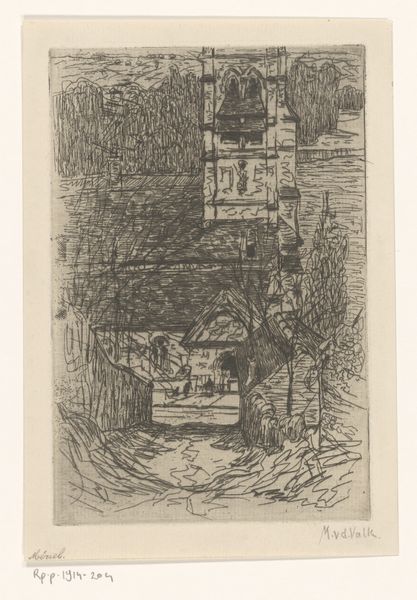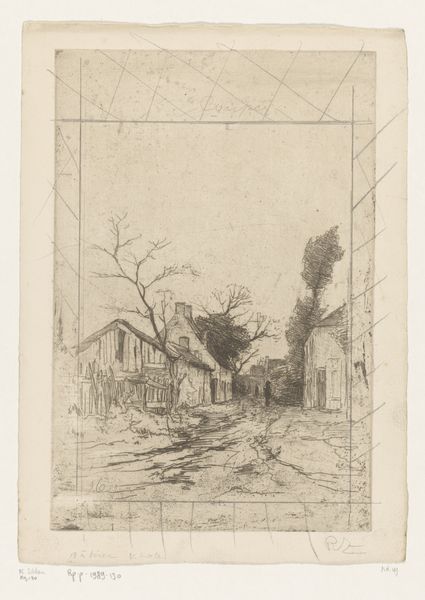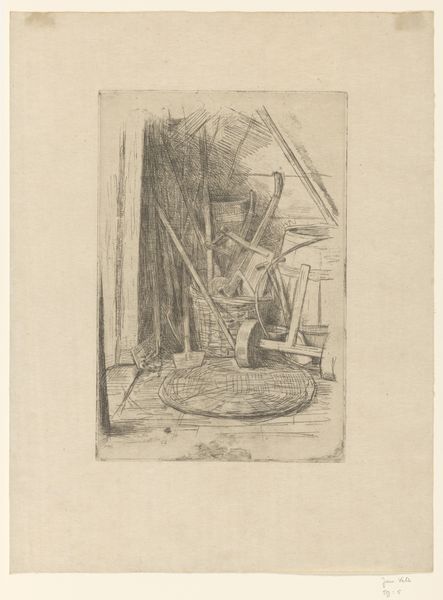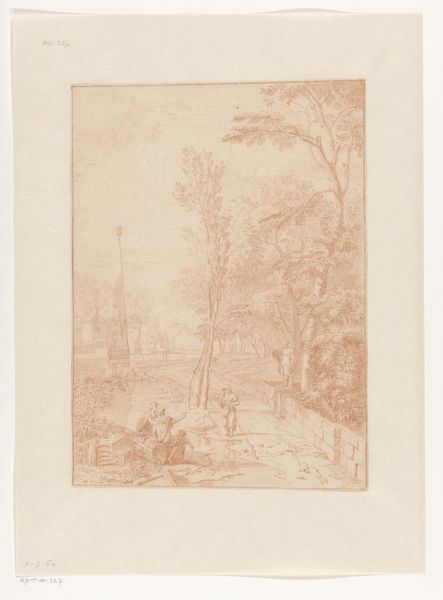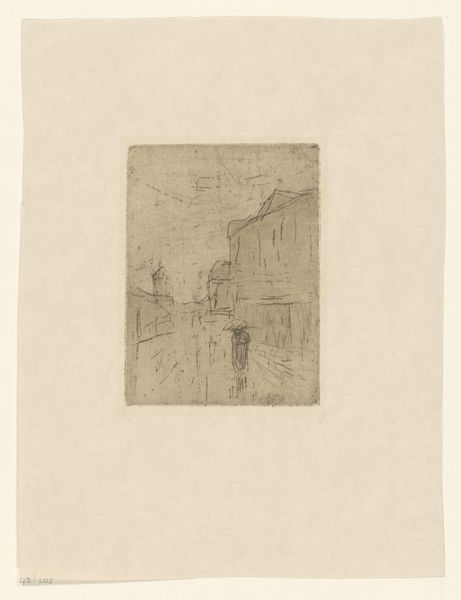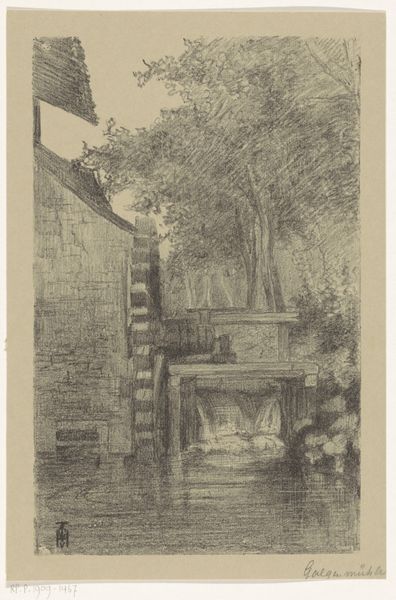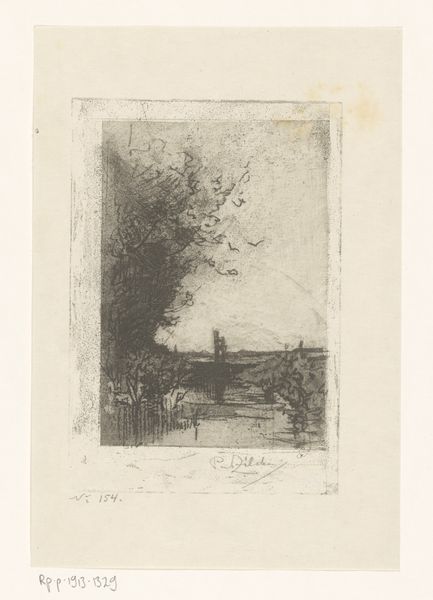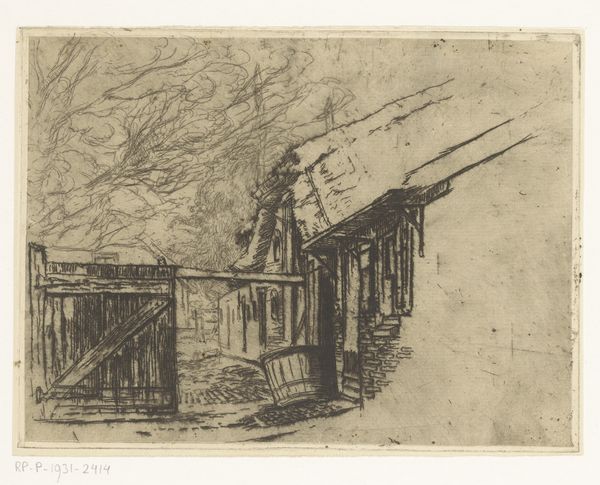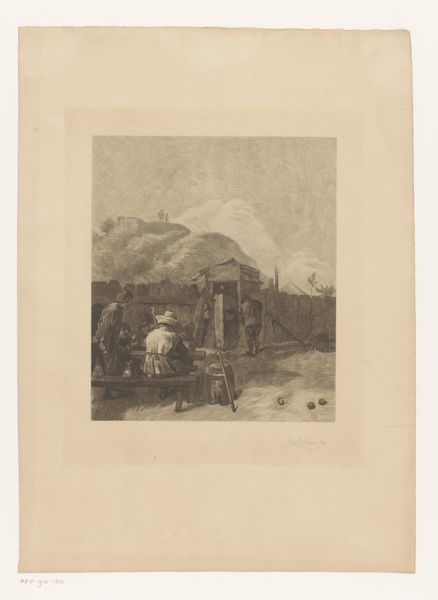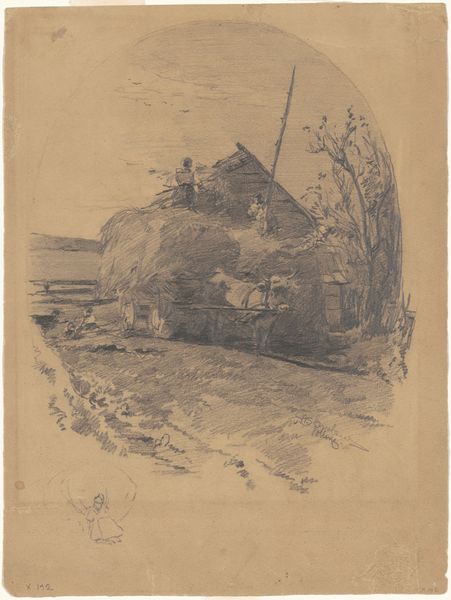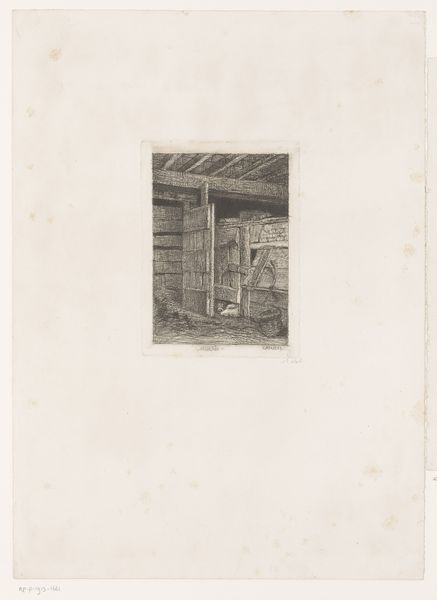
drawing, print, etching
#
pencil drawn
#
drawing
#
dutch-golden-age
# print
#
etching
#
landscape
#
etching
#
pencil drawing
#
realism
Dimensions: height 150 mm, width 110 mm
Copyright: Rijks Museum: Open Domain
Curator: Here we have Johannes Löhr’s etching, "Afdak met ladder," created sometime between 1892 and 1928. Editor: My initial feeling? Quiet solitude. There's something very unassuming, almost melancholic, in this depiction of the ordinary. Curator: Löhr’s rendering is incredibly detailed, even for a smaller print. You see the textures of the brick, the roughness of the wooden ladder, and even the haphazard placement of items near the building. There’s a sense of lived experience etched here. Editor: I see the remnants of a Dutch Golden Age sensibility here; however, beyond its surface charm, this work captures an intersection between human industry and natural decay, offering viewers an opportunity to consider questions of rural labor or land ownership at a very specific moment. How are the stories embedded in ordinary people's dwellings often neglected when narrating the dominant national histories? Curator: Exactly! The composition directs our eyes from the sturdy ladder up towards the ambiguous space beyond—almost a symbolic ascent from the mundane into something more. The blurring of those boundaries feels… intentional. Like a whisper asking: Where are you placing yourself in the great, often invisible, tapestry of everyday labor? Editor: In that sense, it is a mirror—isn't all art?—that encourages us to gaze back at ourselves reflected through socio-political systems shaping our lived realities. Perhaps it urges deeper contemplations surrounding historical oppressions influencing material access today. Curator: Perhaps that is why Löhr focuses his artistic attention on overlooked subjects like toolsheds, humble homes and ladders; elevating them beyond their mere functionality into something laden with meaning. There is something very tender about such a practice, such caring observation... Editor: By doing so, Löhr invites a reflection upon systems influencing material conditions impacting many through history. In some ways, art challenges, and perhaps empowers, viewers towards empathetic vision; making apparent issues that must otherwise remain opaque from corridors of power. Curator: Beautifully said. The image lingers… suggesting a whole story beyond the lines, making you question where and how do simple spaces speak and contribute within larger discussions about historical or contemporary existence today? Editor: Exactly. A work best enjoyed with pause—with consideration.
Comments
No comments
Be the first to comment and join the conversation on the ultimate creative platform.
